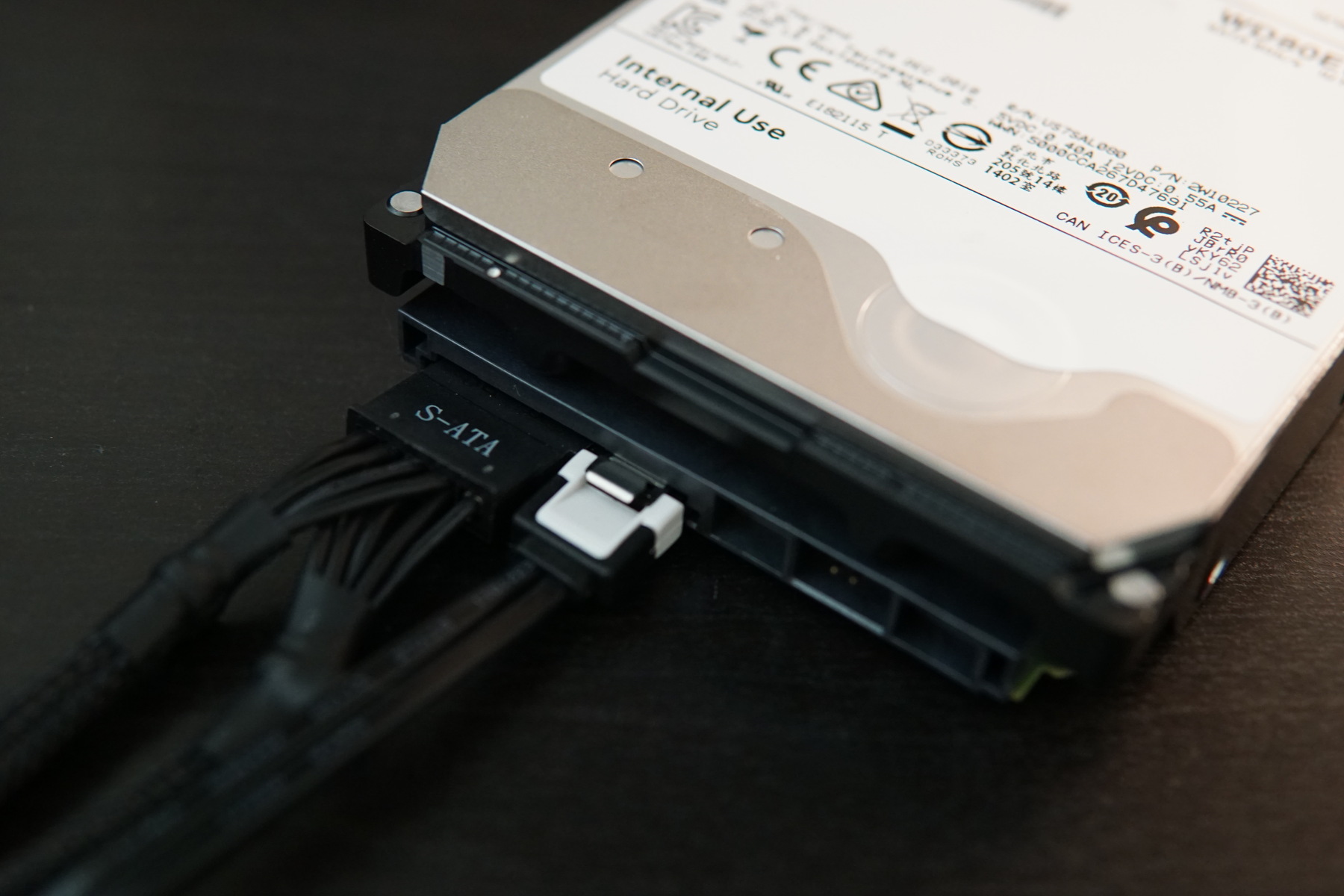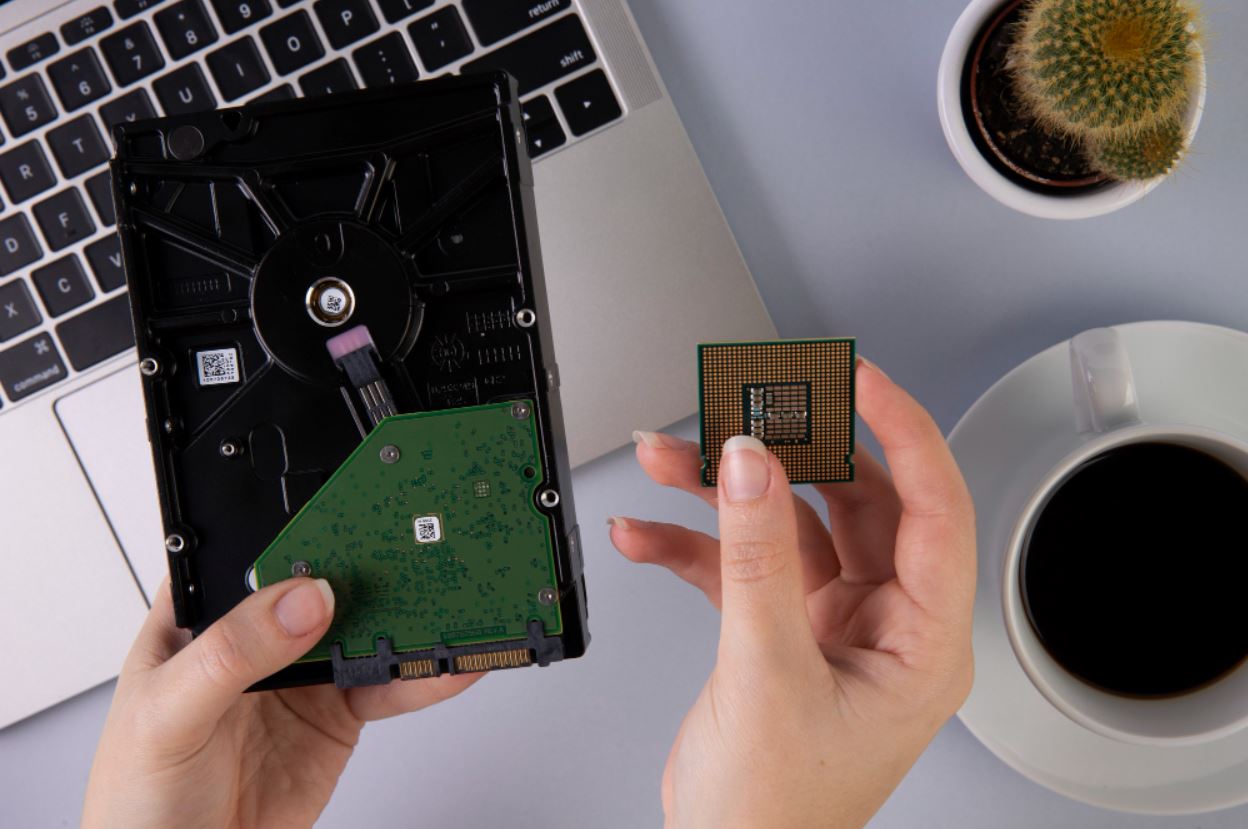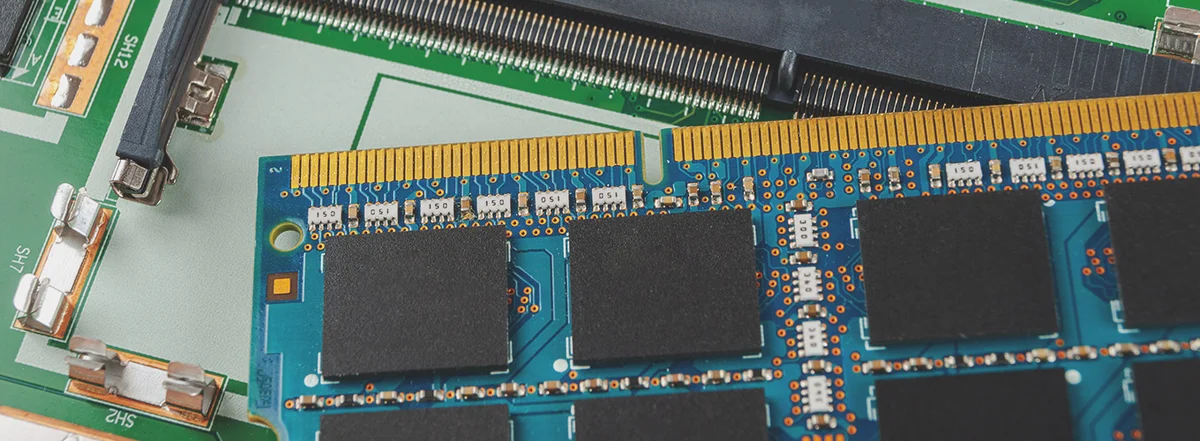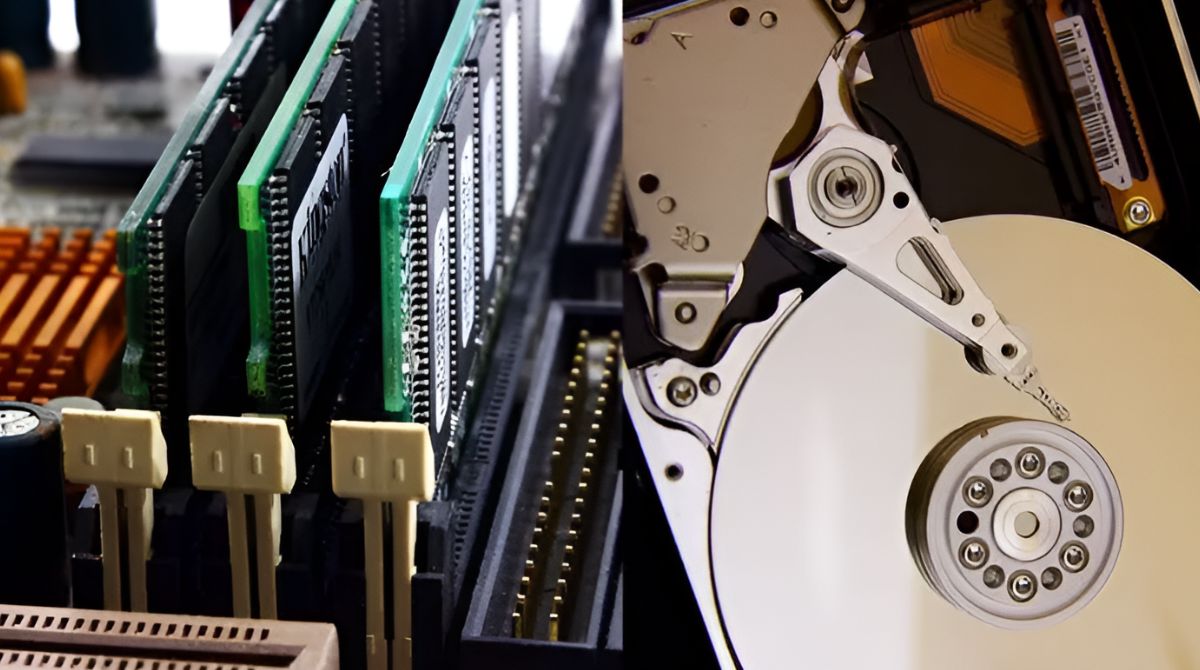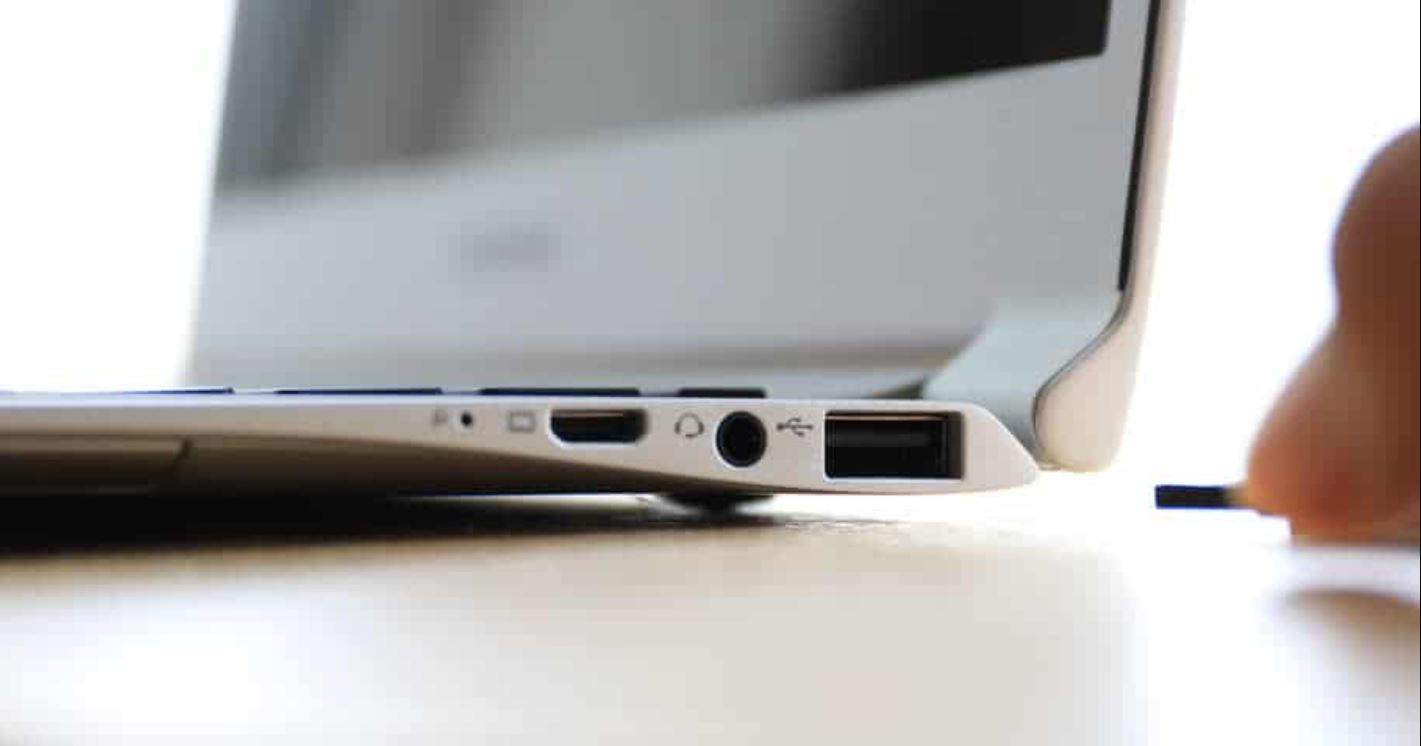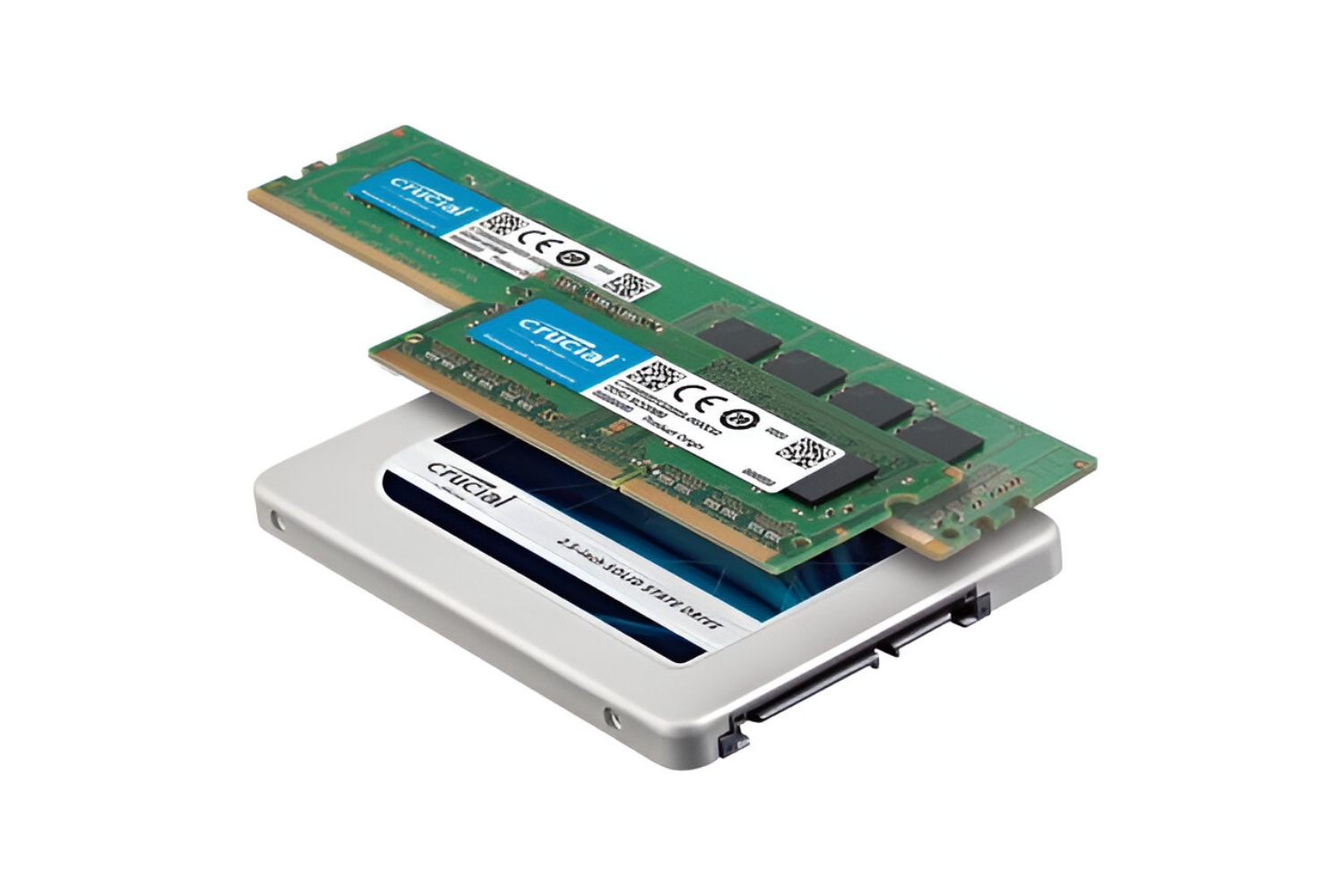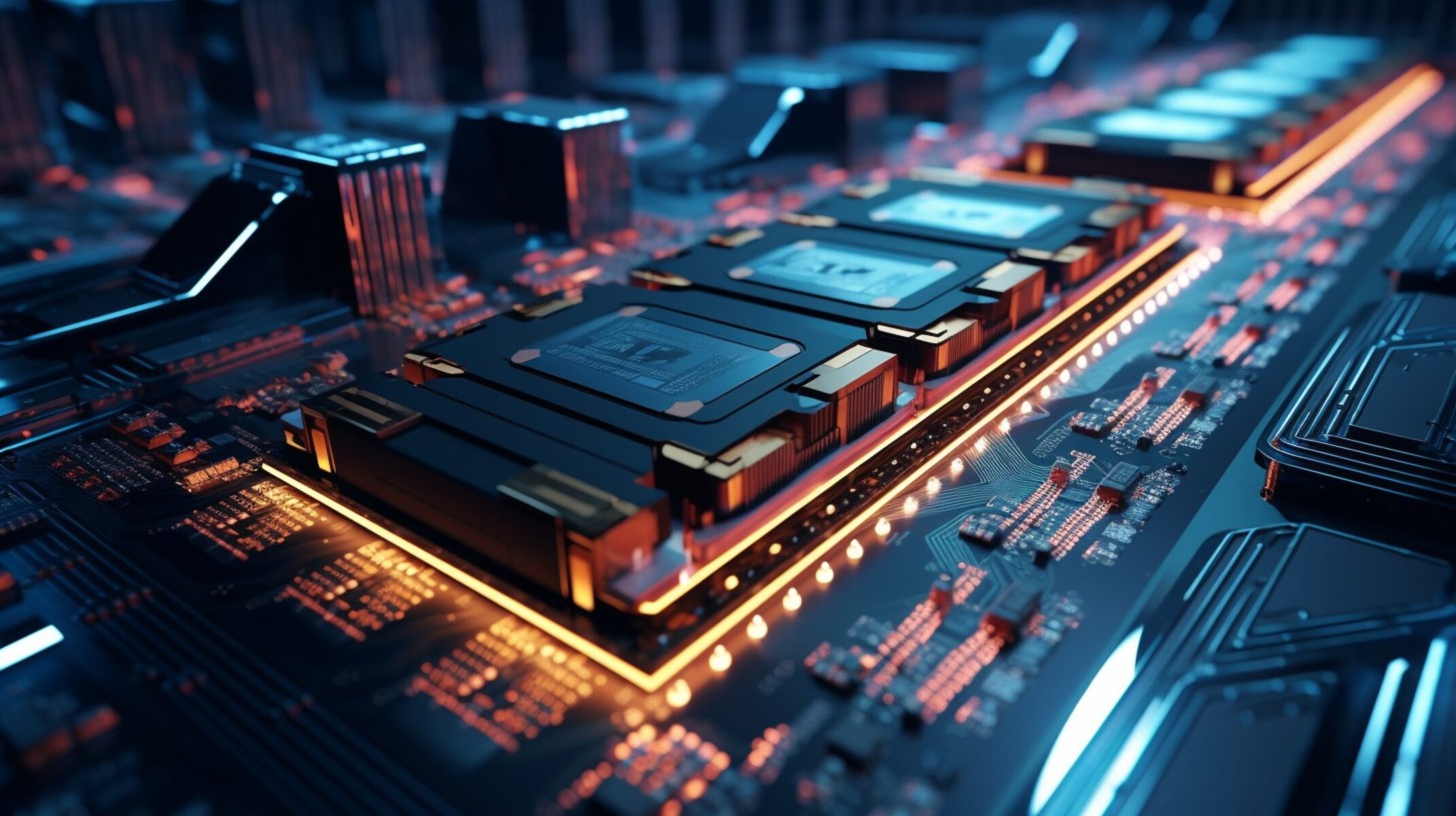Introduction
Welcome to the world of technology where the need for more RAM (Random Access Memory) is an ever-present demand. RAM plays a vital role in the performance of a computer system, ensuring smooth multitasking and efficient operation of applications. However, as software becomes more resource-intensive and complex, traditional RAM capacities may fall short, leading to sluggish performance. But fear not! There is a solution that can boost your computer’s performance without breaking the bank: using an external hard drive as additional RAM.
In this guide, we will explore the concept of using an external hard drive to increase the RAM of your computer system. We will dive into why RAM is important, discuss virtual memory, and provide step-by-step instructions on how to utilize an external hard drive to enhance your computer’s performance. So, whether you are a gamer looking to enhance your gaming experience or a professional wanting to optimize your workflow, this guide will equip you with the knowledge to maximize the potential of your computer system.
Before we delve into the technical details, it is important to note that using an external hard drive as RAM is not a perfect substitute for physical RAM. The performance gains may not be as significant as adding more physical RAM modules, but it can still provide a noticeable improvement. Additionally, it is essential to ensure you have a suitable external hard drive for this purpose and follow the proper steps to configure it.
Now that we have set the stage, let us explore what RAM is and why it is crucial for the smooth operation of your computer system.
What is RAM and why is it important?
RAM, or Random Access Memory, is a crucial component of any computer system. It is a type of hardware that provides temporary storage for data and instructions that the processor needs to access quickly. Unlike hard drives or solid-state drives, RAM is volatile memory, which means that its contents are erased when the computer is powered off.
RAM plays a vital role in the overall performance of your computer. When you open a program or file, the operating system loads it into RAM, allowing the processor to quickly access the necessary data. This allows for seamless multitasking, as the computer can quickly switch between different applications and tasks without experiencing a slowdown.
Having an adequate amount of RAM is essential for several reasons:
- Improved multitasking: RAM allows you to run multiple applications simultaneously without experiencing a significant decrease in performance. With more RAM, you can seamlessly switch between programs and perform tasks efficiently.
- Faster data processing: RAM provides faster access to data compared to storage devices like hard drives or SSDs. This results in quicker loading times for applications, smoother browsing, and improved overall system responsiveness.
- Enhanced gaming and multimedia performance: Gamers and multimedia enthusiasts often require more RAM to handle resource-intensive games, video editing software, or graphic design applications. Having ample RAM ensures smoother gameplay, faster rendering times, and a more immersive experience.
- Optimized virtual machine performance: If you frequently use virtual machines to run multiple operating systems simultaneously, having sufficient RAM is crucial. It allows each virtual machine to have enough memory allocation without affecting the performance of the host system.
While the amount of RAM needed varies depending on individual requirements, it is generally recommended to have at least 8GB of RAM for typical computer usage. However, for more demanding tasks such as gaming, video editing, or running virtual machines, it is advisable to have 16GB or more.
In the next section, we will explore virtual memory and how it can help increase the effective capacity of your computer’s RAM.
Understanding virtual memory
Virtual memory is a concept that allows your computer to use a portion of the hard drive as an extension of its physical RAM. It is a technique used by operating systems to manage memory demands efficiently when physical RAM becomes limited.
When you open applications or run processes on your computer, they require a certain amount of memory to function properly. However, if the available physical RAM is insufficient to accommodate all the running processes, the operating system utilizes virtual memory to swap data between RAM and the hard drive.
Virtual memory creates a larger address space for the computer, allowing it to store data that is not currently in use in the physical RAM on the hard drive. This data is divided into small sections called pages. When a program needs data that is not currently in RAM, the operating system retrieves the required page from the hard drive and puts it into RAM, making it available for immediate access by the program.
While virtual memory provides the illusion of having more RAM than is physically installed, it is important to note that accessing data from the hard drive is slower than accessing it from RAM. This means that if your computer is heavily reliant on virtual memory, it can lead to decreased performance due to the speed difference between RAM and the hard drive.
The size of the virtual memory is determined by the combination of physical RAM and a file called the page file or swap file. The page file is a designated area on the hard drive that the operating system uses to store pages of memory when they are not in use. The operating system dynamically manages the virtual memory, swapping pages between RAM and the page file based on the needs of the running processes.
By using virtual memory, your computer can continue running multiple programs and handling large data sets even when physical RAM is limited. However, to optimize performance, it is crucial to ensure that the page file is properly configured and, if necessary, consider adding more physical RAM to your system.
Now that we have a basic understanding of virtual memory, let’s explore how we can utilize an external hard drive as an extension of the virtual memory, effectively increasing the overall capacity of the RAM in your computer system.
Using an external hard drive as RAM: The basics
If your computer is running low on physical RAM and you’re experiencing performance issues, using an external hard drive as additional RAM can be a cost-effective solution. By configuring the external hard drive as virtual memory, you can effectively increase the available memory for your computer system. However, before diving into the technical aspects, it’s important to understand the basics of using an external hard drive as RAM.
Here are a few key points to keep in mind:
- Compatibility: Not all computers or operating systems support using an external hard drive as RAM. It’s essential to check your computer’s specifications and operating system requirements to ensure compatibility.
- Choosing the right external hard drive: Selecting a suitable external hard drive is crucial. It should provide sufficient storage capacity and meet the required specifications for optimal performance. Ideally, choose a fast, reliable external hard drive with a high-speed interface such as USB 3.0 or Thunderbolt.
- Performance considerations: It’s important to understand that using an external hard drive as RAM may not deliver the same performance benefits as physical RAM. Accessing data from an external drive is generally slower than accessing it from internal RAM, which may result in some performance degradation.
- Proper configuration: Configuring the external hard drive as virtual memory involves specific steps to ensure its compatibility and effectiveness. This includes partitioning the drive, formatting it correctly, and adjusting the virtual memory settings in your operating system.
- Potential limitations: Keep in mind that using an external hard drive as RAM has its limitations. External hard drives may be prone to failure or disconnection, which can lead to data loss or system instability. It’s essential to have proper backups and be mindful of the potential risks involved.
By understanding these basics, you can make informed decisions and take the necessary steps to use an external hard drive as additional RAM for your computer. In the following sections, we will guide you through the process of checking compatibility, preparing the external hard drive, and configuring it as virtual memory in both Windows and macOS environments.
Checking external hard drive compatibility
Before using an external hard drive as additional RAM, it’s important to ensure that your computer system and operating system support this feature. While many modern systems are compatible with this setup, it’s always best to verify to avoid any potential issues. Here are the steps to check external hard drive compatibility:
- Check computer specifications: Start by checking the specifications of your computer or laptop. Look for information regarding the maximum amount of RAM supported and any specific restrictions or recommendations for using an external hard drive as additional RAM.
- Operating system requirements: Confirm that your operating system supports the use of an external hard drive as virtual memory. Check the documentation or support resources for your specific operating system version to determine compatibility.
- Interface compatibility: Ensure that your computer has the necessary ports or interfaces to connect an external hard drive. Common interfaces include USB, Thunderbolt, or eSATA. Verify that the external hard drive you plan to use is compatible with the available ports on your computer.
- File system compatibility: External hard drives typically use a specific file system format, such as NTFS for Windows or HFS+ for macOS. Confirm that your operating system is compatible with the file system format used by the external hard drive.
- Storage capacity: Consider the storage capacity of the external hard drive. Ensure that it provides enough space for your virtual memory requirements and any additional data you might need to store. It’s generally recommended to have a significant amount of empty space on the external hard drive for optimal performance.
- Research and support: Apart from the technical specifications, researching online forums, tech communities, or manufacturer’s documentation can provide insights from other users who have used an external hard drive as RAM. Look for any specific recommendations or potential issues commonly associated with your computer model or operating system.
By going through these steps and verifying the compatibility of your external hard drive with your computer system, you can ensure that you are ready to proceed with using it as additional RAM. In the next section, we will explore the necessary steps to prepare the external hard drive for configuring it as virtual memory.
Preparing the external hard drive
Before configuring an external hard drive as virtual memory, it is essential to properly prepare the drive to ensure compatibility and optimal performance. This involves several important steps that need to be followed. Here’s how you can prepare your external hard drive:
- Backup your data: Before making any changes to the external hard drive, ensure that you have a backup of any important data stored on it. Partitioning and formatting the drive will erase all existing data, so it’s crucial to have a copy of your files elsewhere.
- Partition the drive: If your external hard drive has multiple partitions, it’s best to remove all but one partition. Having a single partition dedicated to virtual memory simplifies the configuration process and avoids potential complications.
- Format the partition: Format the partition on the external hard drive using the appropriate file system for your operating system. For Windows, NTFS is commonly used, while macOS typically uses HFS+ or APFS. Formatting ensures that the partition is ready to be used by the operating system as virtual memory.
- Assign a drive letter or mount point: In Windows, assign a drive letter to the partition on the external hard drive. This will allow the operating system to recognize the drive and its associated virtual memory. On macOS, a mount point will be automatically assigned once the drive is formatted.
- Test the external hard drive: After partitioning and formatting, it’s a good idea to test the external hard drive for any potential issues. Check if it is being recognized by your computer system, ensure that you can read and write files to it, and verify its overall stability.
- Keep the external hard drive connected: For using an external hard drive as virtual memory, it is important to keep it connected to your computer whenever it’s powered on. Disconnecting the drive or turning it off will result in a loss of virtual memory, impacting system performance and stability.
By following these steps, you can effectively prepare your external hard drive for use as additional RAM. Once the external hard drive is properly prepared, you are ready to proceed with configuring it as virtual memory in your operating system. In the following sections, we will provide instructions for adjusting the virtual memory settings in both Windows and macOS environments.
Configuring the external hard drive as virtual memory
Once you have prepared the external hard drive, the next step is to configure it as virtual memory in your operating system. This process allows your computer to utilize the external hard drive as additional RAM. The steps for configuring virtual memory differ slightly between Windows and macOS. Below, you will find instructions for both operating systems:
Adjusting virtual memory settings in Windows:
- Open the Control Panel by clicking on the Start menu and searching for “Control Panel”.
- Within the Control Panel, select “System and Security”, then click on “System” to open the System settings.
- In the System window, select “Advanced system settings” on the left-hand side.
- In the System Properties window, navigate to the “Advanced” tab.
- Under the “Performance” section, click on the “Settings” button.
- In the Performance Options window, go to the “Advanced” tab.
- Click on the “Change” button in the Virtual memory section.
- Uncheck the option “Automatically manage paging file size for all drives”.
- Select the external hard drive partition you prepared earlier.
- Choose the “Custom size” option and enter values for the initial and maximum size of the virtual memory. It is recommended to set the same values to avoid resizing.
- Click “Set” and then “OK” to save the changes.
- Restart your computer for the changes to take effect.
Adjusting virtual memory settings in macOS:
- Click on the Apple menu and select “System Preferences”.
- In the System Preferences window, click on “Memory”.
- In the Memory tab, click on the “Automatically manage paging files” checkbox to disable it.
- Click on the external hard drive partition you prepared earlier to select it.
- Choose the “Custom size” option and enter values for the initial and maximum size of the virtual memory. It is recommended to set the same values to avoid resizing.
- Click “Apply” to save the changes.
- Restart your computer for the changes to take effect.
With these configurations in place, your computer will now utilize the external hard drive as additional virtual memory, effectively increasing the overall RAM capacity. It’s important to note that if you experience any stability issues or performance degradation, you may need to adjust the virtual memory settings or consider adding more physical RAM to your system.
Next, we will delve into some best practices and tips for using an external hard drive as RAM to maximize its effectiveness and ensure a smooth computing experience.
Adjusting virtual memory settings in Windows
If you’re using a Windows operating system and want to configure an external hard drive as virtual memory, you can follow these steps to adjust the virtual memory settings:
- Click on the Start menu and search for “Control Panel”. Open the Control Panel from the search results.
- In the Control Panel, navigate to the “System and Security” section. Click on “System”.
- In the System window, select “Advanced system settings” on the left-hand side. This will open the System Properties window.
- In the System Properties window, navigate to the “Advanced” tab.
- Under the “Performance” section, click on the “Settings” button. This will open the Performance Options window.
- In the Performance Options window, go to the “Advanced” tab.
- Within the Advanced tab, look for the “Virtual memory” section and click on the “Change” button.
- In the Virtual Memory window, uncheck the option “Automatically manage paging file size for all drives”.
- Next, you will see a list of drives and their current virtual memory settings. Select the partition of the external hard drive that you want to use for virtual memory.
- Once the external hard drive partition is selected, choose the “Custom size” option.
- Enter values for the initial size and maximum size of the virtual memory in megabytes (MB). It is recommended to set the same values for both to prevent resizing.
- Click on the “Set” button, and then click “OK” to save the changes.
- Restart your computer for the changes to take effect.
After restarting your computer, it will start using the external hard drive partition as virtual memory. This effectively increases the available memory for your system, improving multitasking capabilities and overall performance. However, keep in mind that using an external hard drive as virtual memory may not offer the same performance benefits as physical RAM, as data access speed might be slower.
If you encounter any stability issues or notice performance degradation, you may need to adjust the virtual memory settings or consider adding more physical RAM to your system. Regularly monitoring your system’s performance can help you identify any potential bottlenecks in memory usage and make necessary adjustments accordingly.
With the virtual memory settings in Windows appropriately adjusted, you are now ready to utilize your external hard drive as additional RAM. In the following sections, we will explore best practices and tips for using an external hard drive as RAM to maximize its effectiveness and ensure a smooth computing experience.
Adjusting virtual memory settings in macOS
If you are using a macOS operating system and want to configure an external hard drive as virtual memory, you can adjust the settings using the following steps:
- Click on the Apple menu in the upper-left corner of your screen and select “System Preferences” from the drop-down menu.
- In the System Preferences window, click on the “Memory” or “Startup Disk” category, depending on your macOS version.
- In the Memory or Startup Disk tab, locate the “Automatically manage paging files” checkbox and uncheck it.
- Select the partition of the external hard drive that you have prepared for virtual memory.
- Choose the “Custom size” option and enter values for the initial size and maximum size of the virtual memory in megabytes (MB).
- Click the “Apply” button to save the changes.
- Restart your macOS computer for the changes to take effect.
Upon restarting your computer, macOS will begin utilizing the selected partition of the external hard drive as virtual memory. This expands the available memory for your system, enhancing multitasking capabilities and overall performance. Keep in mind that using an external hard drive as virtual memory may not offer the same performance benefits as physical RAM due to slower data access speeds.
If you experience stability issues or notice degraded performance, consider adjusting the virtual memory settings or upgrading your physical RAM. Regularly monitoring your system’s performance can help identify any potential memory-related bottlenecks, enabling you to make necessary adjustments accordingly.
With the virtual memory settings in macOS properly configured, you can effectively leverage your external hard drive as additional RAM. In the subsequent sections, we will explore best practices and tips for using an external hard drive as RAM to optimize its effectiveness and ensure a seamless computing experience.
Best practices for using an external hard drive as RAM
Using an external hard drive as RAM can provide a significant boost to your computer’s performance. To optimize the effectiveness of this setup and ensure a smooth computing experience, it’s important to follow some best practices. Here are some tips to help you make the most of using an external hard drive as RAM:
- Choose a fast and reliable external hard drive: Opt for an external hard drive with high-speed connectivity, such as USB 3.0 or Thunderbolt, to ensure optimal data transfer rates.
- Ensure sufficient free space on the external hard drive: Keep a reasonable amount of free space on the drive to ensure efficient virtual memory performance. A good rule of thumb is to have at least twice the amount of virtual memory you have allocated on the external hard drive.
- Regularly monitor your system’s performance: Keep an eye on your computer’s performance to assess whether the additional virtual memory provided by the external hard drive is sufficient or if you need to consider upgrading your physical RAM.
- Keep the external hard drive connected: To maintain the benefits of using an external hard drive as RAM, ensure that it remains connected to your computer whenever it is powered on. Disconnecting the drive or turning it off will result in a loss of virtual memory and can impact system stability.
- Backup your data: While configuring an external hard drive as virtual memory, it’s always wise to have regular backups of important data stored on both your internal and external drives. This ensures that your data is protected in case of any unforeseen issues.
- Consider adding physical RAM: If you find that using an external hard drive as RAM does not meet your performance expectations, you may want to consider upgrading your computer’s physical RAM. This will provide a more substantial performance boost.
- Periodically review and adjust virtual memory settings: As your computing needs change, you might need to adjust the virtual memory settings on your external hard drive. Regularly assess your system’s performance and make adjustments accordingly to optimize performance.
By following these best practices, you can optimize the usage of an external hard drive as RAM and enhance your computer’s performance. Remember that using an external hard drive as virtual memory is a workaround and may not offer the exact same benefits as installing additional physical RAM modules. For maximum performance, consider upgrading your physical RAM if desired and feasible.
In the next section, we will answer some frequently asked questions related to using an external hard drive as RAM, providing further clarification and guidance.
Frequently Asked Questions (FAQs)
Here are some frequently asked questions about using an external hard drive as RAM:
- Can I use any external hard drive as RAM?
- Will using an external hard drive as RAM provide the same performance as physical RAM?
- Can I use an external SSD instead of an external hard drive as RAM?
- Can I use both physical RAM and an external hard drive as RAM simultaneously?
- What are the potential risks of using an external hard drive as RAM?
- Can I revert back to using only physical RAM?
No, not all external hard drives are suitable for use as RAM. It’s important to check the specifications of your computer system and operating system requirements to ensure compatibility. Additionally, choose a fast and reliable external hard drive with adequate storage capacity for optimal performance.
No, using an external hard drive as RAM might not deliver the exact same performance benefits as physical RAM. Accessing data from an external drive is generally slower than accessing it from internal RAM. However, it can still offer noticeable performance improvements, especially if your system is low on physical RAM.
Yes, you can use an external solid-state drive (SSD) instead of a traditional external hard drive as RAM. SSDs generally offer faster data transfer speeds, which can result in improved performance. However, keep in mind that SSDs might have a limited number of write cycles, so excessive usage as virtual memory could decrease their lifespan.
Yes, it is possible to use both physical RAM and an external hard drive as RAM. In such cases, the operating system will utilize both types of memory, with the internal RAM being prioritized for faster access. The extra virtual memory provided by the external hard drive can help handle additional memory demands.
There are a few potential risks associated with using an external hard drive as RAM. External drives might be prone to failure or disconnection, leading to potential data loss or system instability. It’s important to have proper backups of your data and be cautious when handling the external hard drive to minimize any potential risks.
Yes, if you decide to stop using an external hard drive as RAM, you can revert back to utilizing only physical RAM. Simply adjust the virtual memory settings in your operating system, setting it to “Automatically manage paging file size for all drives”. This will allow the operating system to allocate virtual memory based on the available physical RAM.
These FAQs address common concerns and questions about using an external hard drive as RAM. If you have any specific queries or uncertainties, it’s always recommended to consult your computer manufacturer’s documentation or seek assistance from a technical expert.
Now that we have explored the FAQs, let’s move on to the concluding section of this guide.
Conclusion
Using an external hard drive as additional RAM can be a practical solution to boost your computer’s performance when faced with memory constraints. By understanding the basics of RAM, virtual memory, and the process of configuring an external hard drive, you can harness the potential of this setup to enhance multitasking capabilities and improve overall system responsiveness.
In this guide, we covered the importance of RAM and its role in ensuring smooth operation and efficient multitasking. We explored the concept of virtual memory and how it allows your computer to utilize an external hard drive as an extension of its physical RAM. We discussed the steps involved in checking external hard drive compatibility, preparing the external hard drive, and configuring it as virtual memory in both Windows and macOS operating systems.
To maximize the effectiveness of using an external hard drive as RAM, we provided best practices that include selecting a reliable external hard drive, monitoring system performance, ensuring sufficient free space, and regularly reviewing and adjusting virtual memory settings. We also answered frequently asked questions to address common concerns regarding this setup.
Keep in mind that while using an external hard drive as RAM can provide noticeable performance improvements, it may not deliver the exact same benefits as adding physical RAM modules. Consider your specific needs and budget when deciding on the best approach to increase your computer’s memory.
We hope that this guide has provided valuable insights and guidance on using an external hard drive as RAM. By following the steps outlined here and employing best practices, you can make the most of your computer system’s memory capabilities, optimize performance, and enjoy a smoother computing experience.







